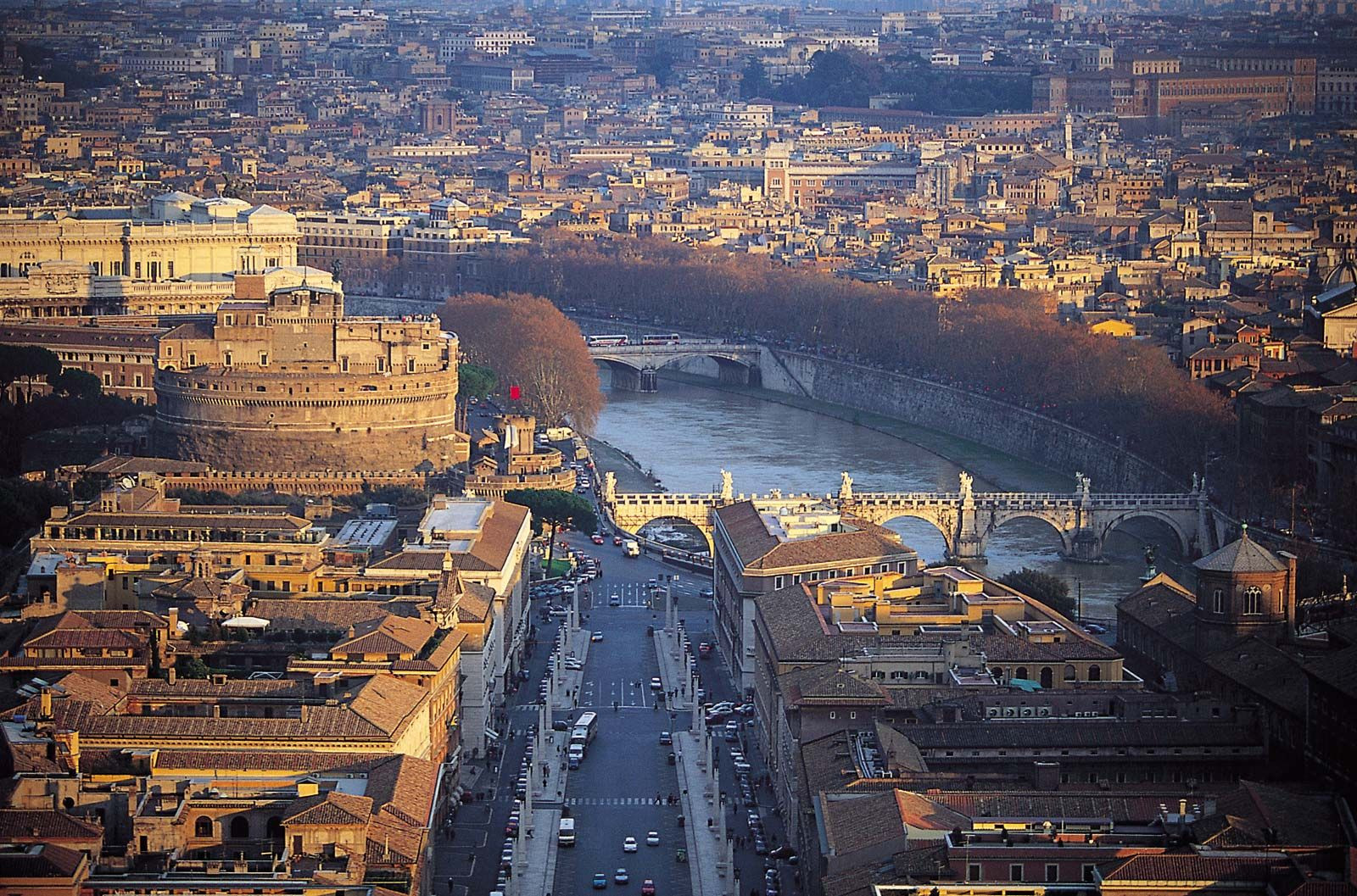Rome, the Eternal City, resonates through history, culture, and religion. As a cradle of Western civilization and the heart of the Roman Catholic Church, Rome’s significance is undeniable. But Where Is Rome Located geographically, and how has its location contributed to its enduring legacy? This article delves into the precise location of Rome, exploring its geographical context and the strategic importance of its setting.
Rome’s Geographical Coordinates: Finding the Eternal City
Rome is strategically positioned in central Italy, nestled within the Lazio region. To pinpoint where Rome is located more precisely, it lies on the banks of the historic Tiber River. This vital waterway flows through the city, playing a crucial role in Rome’s development and providing access to the sea. Geographically, Rome is situated approximately 15 miles (24 kilometers) inland from the Tyrrhenian Sea, part of the Mediterranean Sea. This proximity to the coast offered trade and naval advantages in ancient times while providing a degree of natural protection inland.
 Aerial view of Rome, Italy, showcasing its urban layout and the Tiber River flowing through the city.
Aerial view of Rome, Italy, showcasing its urban layout and the Tiber River flowing through the city.
The city’s location on the Italian Peninsula places it in a central position within the Mediterranean basin. This central location was instrumental in Rome’s rise to power, allowing it to expand its influence across the Mediterranean world. Rome’s seven hills – Palatine, Capitoline, Quirinal, Viminal, Esquiline, Caelian, and Aventine – are also a defining feature of its geography, offering strategic defensive positions and contributing to the city’s iconic landscape.
The Strategic Significance of Rome’s Location Throughout History
Understanding where Rome is located is key to grasping its historical importance. Its inland position on the Tiber River provided both fresh water and a navigable route for trade and transportation, while its distance from the coast offered protection from immediate naval attacks. The surrounding hills provided natural defenses and vantage points.
 Map of Rome, Italy, highlighting its position within the Lazio region and central Italy.
Map of Rome, Italy, highlighting its position within the Lazio region and central Italy.
This strategic location facilitated Rome’s growth from a small settlement to the capital of a vast republic and then an empire. The Roman Empire’s control over the Mediterranean was partly due to Rome’s central position, enabling efficient communication, trade, and military deployment throughout its territories. Even after the fall of the Roman Empire, Rome’s location remained significant, becoming the center of the Roman Catholic Church and a major pilgrimage site. Its geographical position in central Italy allowed it to maintain its cultural and religious influence across Europe for centuries.
Modern Rome: A Capital City in the Heart of Italy
Today, where Rome is located continues to be vitally important. As the capital of modern Italy, Rome is the nation’s political and administrative center. Its central Italian location makes it easily accessible from other parts of the country, facilitating national governance and connectivity. Rome is a major transportation hub, with two international airports and a central railway station, further cementing its role as a focal point within Italy and Europe.
While other Italian cities like Milan and Turin have surpassed Rome economically in some sectors, Rome remains a global cultural and tourist destination, drawing millions of visitors each year to explore its historical sites, religious landmarks, and artistic treasures. The question of where is Rome located is not just a matter of geography; it’s about understanding the heart of a city whose location has been fundamental to shaping Western civilization and continues to define its unique character today.
In conclusion, Rome is located in central Italy, in the Lazio region, on the Tiber River, approximately 15 miles inland from the Tyrrhenian Sea. This strategic location has been instrumental in Rome’s historical dominance, its enduring cultural and religious influence, and its modern-day role as Italy’s vibrant capital. Understanding where Rome is located provides crucial context for appreciating the city’s remarkable history and enduring appeal.
